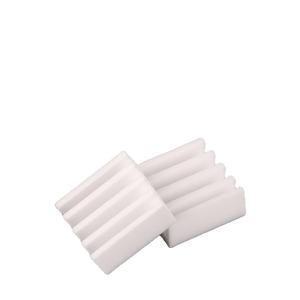Discover Premium Ceramic Products | Durability & Elegance United | Advanced Ceramics
PRODUCT PARAMETERS
Description
Overview of aluminum nitride ceramics
Aluminum Nitride Ceramic is an advanced ceramic material with aluminum nitride as the main component. It has been widely used in electronics, optics, and mechanics due to its unique properties.
Features of aluminum nitride ceramics
High thermal conductivity: Aluminum nitride ceramics have relatively high thermal conductivity, usually between 170-260 W/m·K, which makes it an excellent heat dissipation material. It is especially suitable for electronic devices that require efficient heat dissipation, such as substrate materials for power semiconductor devices.
Good electrical insulation: Despite its high thermal conductivity, aluminum nitride ceramics are excellent insulators of electricity, which can effectively prevent current leakage and ensure the safe operation of electronic components.
Low dielectric constant and dielectric loss: These characteristics make aluminum nitride ceramics very suitable for use in high-frequency circuits because it can reduce energy loss during signal transmission.
High temperature resistance: Aluminum nitride ceramics can maintain structural stability and strength at extremely high temperatures. Its melting point is about 2800°C, so it is suitable for applications in high temperature environments.
Low thermal expansion coefficient: Compared with semiconductor materials such as silicon, aluminum nitride has a lower thermal expansion coefficient, which means it has better dimensional stability when the temperature changes, which helps improve packaging reliability.
Corrosion resistance: Aluminum nitride ceramics have good chemical stability to most molten metals and are not easily oxidized or corroded, allowing them to perform well in harsh environments.
High mechanical strength: Although not as hard as some other types of ceramic materials, aluminum nitride ceramics still provide enough mechanical strength to allow them to be used in many structural applications.
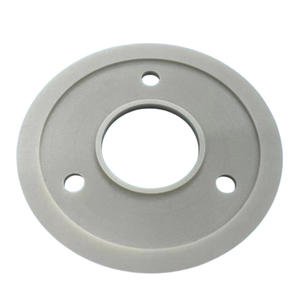
(High Quality Thermal Conductive Sheet AlN Aluminum Nitride Ceramic Substrate)
Specifications of High Quality Thermal Conductive Sheet AlN Aluminum Nitride Ceramic Substrate
High Quality Thermal Conductive Sheet AlN Aluminum Nitride Ceramic Substrate delivers superior performance for advanced thermal management. The material combines high thermal conductivity with excellent electrical insulation. Its thermal conductivity reaches 170-180 W/mK. This ensures efficient heat dissipation in high-power applications. The substrate operates reliably across a wide temperature range. It withstands temperatures from -50°C to 850°C. This stability prevents deformation or cracking under extreme conditions.
The ceramic substrate offers strong chemical resistance. It resists corrosion from acids, alkalis, and organic solvents. This makes it suitable for harsh environments. Mechanical strength is another key feature. The flexural strength exceeds 300 MPa. This ensures durability under mechanical stress. The material resists thermal shock. Rapid temperature changes do not compromise its structure.
Surface smoothness is critical for component bonding. The substrate achieves a surface roughness below Ra 0.4 µm. This promotes strong adhesion for circuits or coatings. Dimensional precision is maintained tightly. Thickness tolerance stays within ±0.02 mm. Custom sizes are available. Standard dimensions include thicknesses from 0.3 mm to 1.5 mm. Length and width can be tailored to specific needs.
Electrical insulation properties meet high standards. The dielectric strength exceeds 15 kV/mm. This prevents current leakage in high-voltage systems. The material’s dielectric constant remains low. It stays stable under varying frequencies. This minimizes signal loss in high-frequency applications.
Aluminum Nitride is environmentally stable. It resists moisture absorption. Performance remains consistent in humid conditions. The material is non-toxic. It complies with RoHS and REACH regulations.
Applications span industries. Electronics use it for power modules and LED cooling. Automotive systems integrate it in EV battery management. Aerospace relies on it for avionics thermal control. Renewable energy systems apply it in solar inverters. Semiconductor manufacturing uses it for wafer processing.
The substrate is compatible with thin-film and thick-film processes. Metallization layers bond securely. Options include gold, silver, or copper coatings. Laser drilling and cutting enable precise patterning. Custom shapes or holes are achievable without compromising integrity.
Density is kept low. The substrate weighs approximately 3.26 g/cm³. This reduces overall system weight. Thermal expansion matches common materials like silicon. Stress at interfaces is minimized. Long-term reliability is ensured.
Packaging options protect the substrate during shipping. Anti-static materials prevent surface contamination. Each unit undergoes rigorous quality checks. Defect rates are kept below 0.1%. Performance consistency is guaranteed.
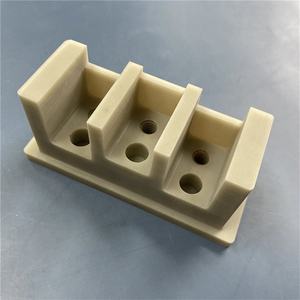
(High Quality Thermal Conductive Sheet AlN Aluminum Nitride Ceramic Substrate)
Applications of High Quality Thermal Conductive Sheet AlN Aluminum Nitride Ceramic Substrate
High-quality thermal conductive sheets made from aluminum nitride (AlN) ceramic substrates are widely used in industries requiring efficient heat management. These materials excel in transferring heat away from sensitive components. They are ideal for high-power electronics. Devices like semiconductors and power modules generate significant heat during operation. AlN ceramic substrates help maintain stable temperatures. This prevents overheating and extends device lifespan.
The electronics industry relies on AlN sheets for advanced circuit boards. Their low thermal expansion matches materials like silicon. This reduces stress during temperature changes. It ensures reliable performance in microprocessors and LED systems. High thermal conductivity allows compact designs. Engineers save space without compromising heat dissipation.
LED lighting systems benefit from AlN substrates. High-power LEDs produce heat that affects brightness and color. Efficient thermal management using AlN sheets keeps temperatures low. This improves LED efficiency and durability. Manufacturers achieve longer-lasting products with consistent light output.
Automotive applications include electric vehicles and onboard electronics. EV batteries and power control units need effective cooling. AlN ceramic substrates handle high heat loads in tight spaces. They support faster charging and safer operation. Heat-sensitive parts like sensors and inverters stay protected.
Aerospace and defense sectors use AlN sheets for radar systems and satellite components. These environments demand materials that perform under extreme conditions. AlN resists thermal shock and radiation. It ensures stable operation in critical communication and navigation systems.
Renewable energy systems like solar inverters and wind turbines rely on AlN for heat control. Converting and transmitting energy generates heat. Efficient thermal management maximizes energy output. It reduces downtime and maintenance costs.
Medical devices use AlN substrates in imaging equipment and laser systems. Precision instruments require steady temperatures for accurate results. AlN sheets prevent heat buildup. This enhances device reliability and patient safety.
Aluminum nitride ceramic substrates offer a cost-effective solution for high-performance applications. Their combination of thermal conductivity, electrical insulation, and durability meets modern industry needs.
Company Introduction
Advanced Ceramics founded on October 17, 2014, is a high-tech enterprise committed to the research and development, production, processing, sales and technical services of ceramic relative materials and products.. Since its establishment in 2014, the company has been committed to providing customers with the best products and services, and has become a leader in the industry through continuous technological innovation and strict quality management.
Our products includes but not limited to Silicon carbide ceramic products, Boron Carbide Ceramic Products, Boron Nitride Ceramic Products, Silicon Carbide Ceramic Products, Silicon Nitride Ceramic Products, Zirconium Dioxide Ceramic Products, Quartz Products, etc. Please feel free to contact us.(nanotrun@yahoo.com)

Payment Methods
T/T, Western Union, Paypal, Credit Card etc.
Shipment Methods
By air, by sea, by express, as customers request.

5 FAQs of High Quality Thermal Conductive Sheet AlN Aluminum Nitride Ceramic Substrate
High Quality Thermal Conductive Sheet AlN Aluminum Nitride Ceramic Substrate FAQs
What is Aluminum Nitride Ceramic Substrate?
Aluminum Nitride Ceramic Substrate is a material used in electronics for heat management. It transfers heat efficiently, prevents overheating, and supports high-power devices. It’s made from aluminum nitride powder pressed and sintered at high temperatures. This creates a dense structure ideal for thermal conductivity.
Why pick AlN over other materials like alumina or beryllia?
AlN has higher thermal conductivity than alumina. It moves heat faster, which is critical for high-performance electronics. Unlike beryllia, AlN isn’t toxic. It also matches silicon in thermal expansion, reducing stress in devices. This makes it safer and more reliable for long-term use.
Where is AlN Ceramic Substrate commonly used?
It’s used in LED lighting, power modules, semiconductor packaging, and RF components. High-power electronics like electric vehicles and 5G base stations rely on AlN. Industries needing precise temperature control, like aerospace or medical devices, also use it.
How do I handle AlN substrates to avoid damage?
AlN is brittle. Avoid dropping or applying uneven pressure. Clean surfaces with alcohol or mild solvents. Don’t use abrasive tools. Store in dry conditions to prevent moisture absorption. Follow manufacturer guidelines for machining or metallization to ensure performance.
Can AlN substrates be customized for specific projects?
Yes. Manufacturers offer custom sizes, shapes, thicknesses, and surface finishes. Metal layers like copper or aluminum can be added for better soldering. Discuss requirements early for optimal design. Customization ensures compatibility with thermal management needs in specialized applications.
The answers focus on practical details, technical advantages, and real-world applications. They address common concerns about material choice, handling, and customization. Each response links directly to user needs without unnecessary complexity.
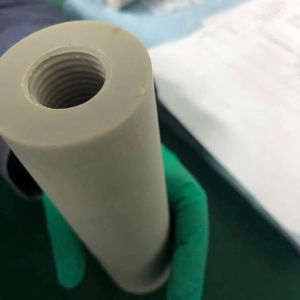
(High Quality Thermal Conductive Sheet AlN Aluminum Nitride Ceramic Substrate)
REQUEST A QUOTE
RELATED PRODUCTS
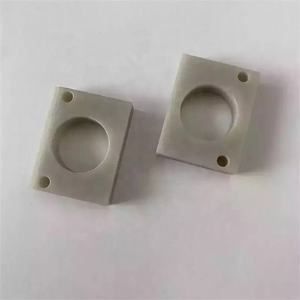
Aluminum Nitride Ceramic Sheet Aluminum Nitride Chip Aluminum Nitride Aln Ceramic Plate
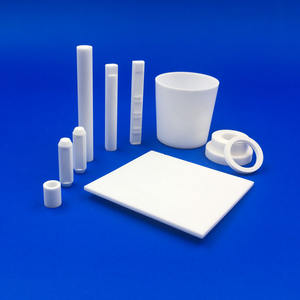
Factory Direct High Temperature Resistance AIN Ceramic Sheet Aluminum Nitride/AlN Ceramic Substrate for IGBT TO264
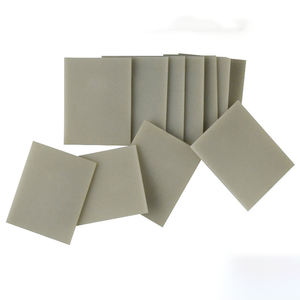
High Purity 99.95% Aluminum Nitride AlN Spherical Powder 3-5um Ceramic Microspheres Durable Heat Conductive Material
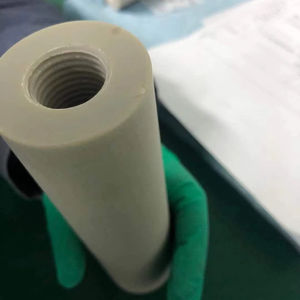
Premium Ceramics Product Ultrathin High Temperature Polished Aln Aluminum Nitride Ceramic Substrate Sheet
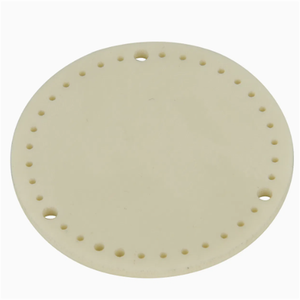
AlN Aluminum Nitride Ceramic Plate


